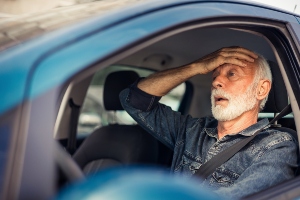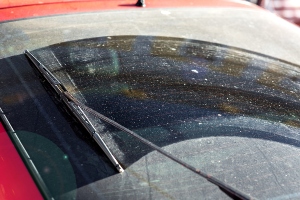Can Minnesota Drivers Be Held Liable for Crashes if They Were Impaired by Prescription Drugs?

Most drivers know the dangers of getting behind the wheel after drinking. What about the dangers of taking prescription drugs? Driving while under the influence of a prescription medication can be just as dangerous as driving while under the influence of alcohol or illegal drugs, if not more so.
Our Minneapolis car accident lawyers discuss why it’s unsafe to drive while under the influence of these drugs and whether this could result in criminal charges in Minnesota. We also review liability for a crash when one of the drivers was on prescription medication.
Were you injured in a car crash by an impaired driver? Do you suspect the driver was under the influence of prescription drugs? TSR Injury Law may be able to help you seek compensation for your injuries. There is no obligation to hire our team to represent you. You can speak to one of our lawyers during a free initial consultation.
Call to speak with our legal team and discuss your legal options. (612) TSR-TIME.
What Types of Prescription Drugs Could Impair Drivers?
Although prescription drugs are intended to help people with different type of medical conditions, they can hinder a driver’s judgement, reaction time and concentration.
Here are some common types of prescription medications that might impair drivers’ ability to safely operate a motor vehicle:
- Opioid Pain Relievers: Medications like oxycodone, hydrocodone, and morphine can cause drowsiness, impaired thinking and decreased reaction times.
- Benzodiazepines: These drugs are used to treat insomnia and anxiety. Examples include diazepam (Valium), alprazolam (Xanax) and lorazepam (Ativan). These prescriptions could cause dizziness, drowsiness and confusion.
- Antidepressants: Some antidepressants, especially older tricyclics like amitriptyline and nortriptyline, can result in sedation, dizziness and slower reaction times.
- Antiepileptic Drugs (AEDs): These are medicines doctors use to control seizures, such as phenobarbital, topiramate and carbamazepine. Antiepileptics can impair cognitive function and motor skills.
- Antipsychotics: Drugs like chlorpromazine and haloperidol can sedate patients, blur their vision and make them dizzy.
- Muscle Relaxants: Medications such as cyclobenzaprine (Flexeril) and carisoprodol (Soma) have side effects like drowsiness and dizziness.
- Antihistamines: These include drugs like Benadryl, which are used to control allergies. However, they can make you drowsy, which impairs your ability to safely operate a motor vehicle.
Drivers should be aware of the potential effects of these medications and discuss their ability to drive safely with their healthcare provider. Sometimes doctors can adjust the dosage and frequency of use of these drugs to avoid side effects that make it unsafe to drive.
Could Impairment From Prescription Drugs Lead to a DWI Charge in Minnesota?
Anyone driving while under the influence of alcohol, illegal drugs or another controlled substance could potentially be charged with driving while impaired (DWI).
According to Minnesota law (169A.20), a driver who is under the influence of alcohol, a controlled substance or an intoxicating substance may face DWI charges. Controlled substances include illegal drugs and prescribed medications.
For instance, drivers could potentially face a DWI charge if they were under the influence of pain relievers, anti-depressants and even sleeping pills.
People who suffer from insomnia may rely on sleeping pills to help them fall and stay asleep at night. Sleeping pills may seem harmless, but they are designed to make you extremely drowsy. The feeling of drowsiness can last up to a day after taking the pill.
Many of these drugs block or suppress certain signals in your nervous system. As a result, your body may become more relaxed, making you feel drowsy or even high. When you are in this state of mind, it can become dangerous for you to do things like drive a car or operate heavy machinery.
Can I Sue a Driver Who Was Impaired by Prescription Drugs?
Yes, you might be able to sue a driver who was impaired by prescription drugs if he or she caused your car crash and injuries. Driving while under the influence of medication is considered negligent, which means that the other party may be held responsible.
The doctor who prescribed the medication could even be held partially liable for the crash if he or she failed to warn the patient of the potentially dangerous side effects. Doctors have a duty of care to inform drivers of any side effects that could occur while they are driving.
However, most car accident cases are resolved through an insurance settlement. Most cases do not end up in court, although our firm is always prepared for that possibility. We have extensive experience negotiating for compensation and securing favorable results in the courtroom.
Benefits of Hiring a Lawyer for a Claim Against an Impaired Driver
You may think securing compensation will be easy if the other driver was impaired, especially if he or she was criminally charged. However, obtaining full compensation can be quite difficult without the help of a seasoned attorney who has a history of results.
Here are some of the ways our attorneys can help you with the legal process:
Conduct a Thorough Investigation
Your lawyer can take the necessary steps to find out what medication the other driver was taking and if it may have contributed to the crash.
Collect Enough Evidence
A lawyer can review the accident report, identify and interview witnesses, and recover photos, videos and other evidence to support your claim.
Handle All Settlement Negotiations
If you decide to manage your case on your own, you will need to deal with the insurance company. This is risky because insurers are trained to manipulate crash victims. They also take claims less seriously when victims are not represented by attorneys.
If you hire a lawyer, he or she can handle this, possibly increasing your chances of securing full compensation. This frees you from having to figure out how to counter the insurance company’s arguments or attempts to lowball your claim.
Injured by an Impaired Driver? Contact TSR Injury Law Today
You do not have to go through the insurance claim process alone. Not only can it be time-consuming, but it can also be very frustrating and difficult to prove your claim with a defendant’s insurance company that will do everything possible to shift blame onto you.
At TSR Injury Law, we have advocated for injury victims and their families for nearly three decades. We want to help you get through this difficult time. We charge no fees unless we win your case.
Call to schedule your free legal consultation: (612) TSR-TIME.


